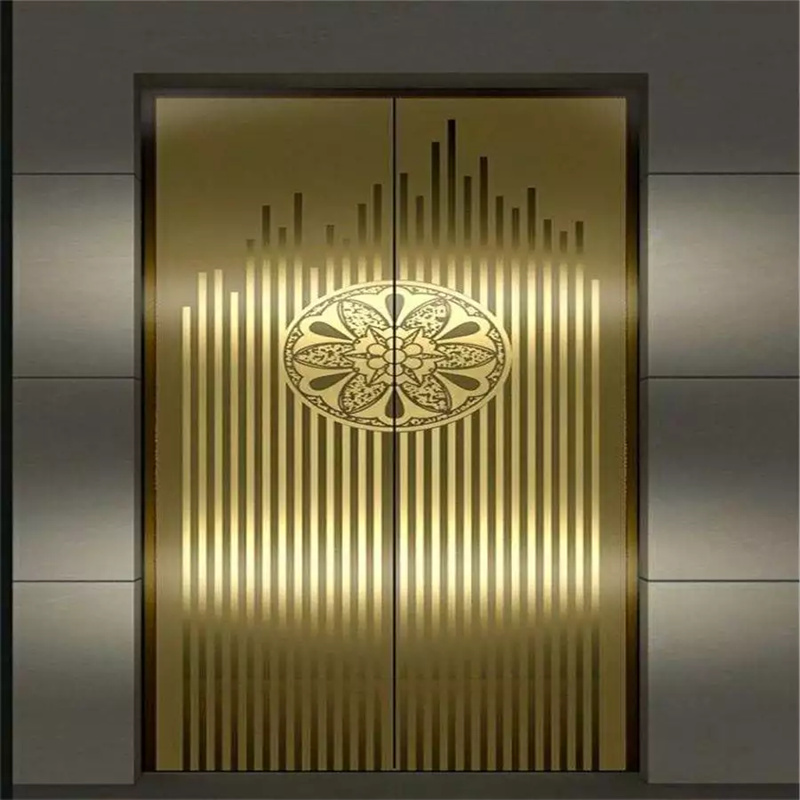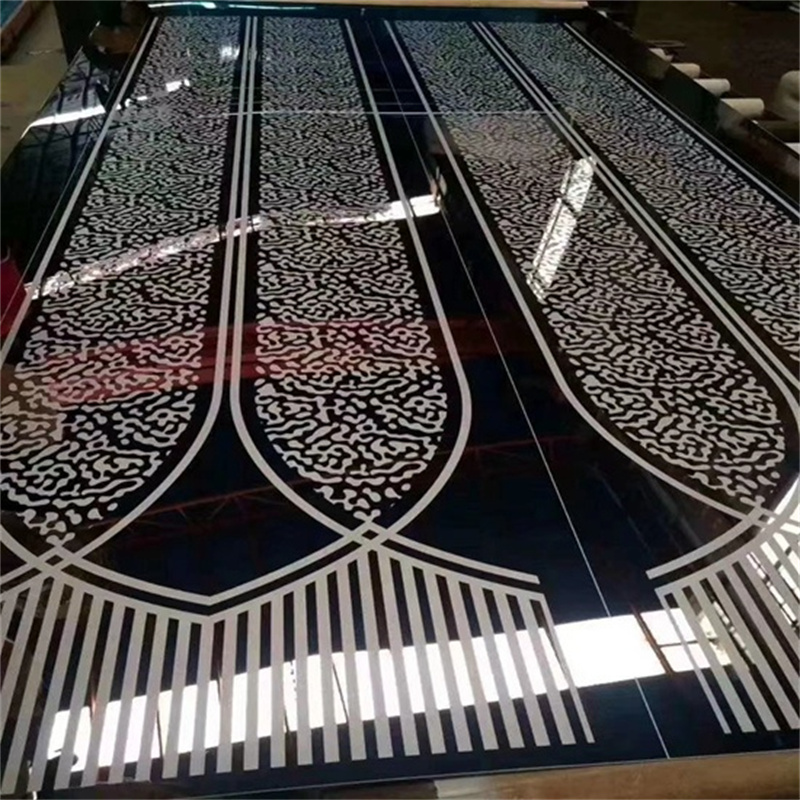In today’s rapidly developing technological era, various advanced technologies emerge in an endless stream, constantly refreshing our understanding of the world. Among them, laser etching technology is like a dazzling star, shining with a unique luster on the stage of technology, and its magical “vanishing act” is truly amazing.
I. The Principle and Characteristics of Laser Etching
In essence, laser etching is a technology that uses a laser beam to finely process the surface of materials. So, how is a laser generated? Photons oscillate back and forth in the cavity. The photons moving along the axis are reflected by the mirrors and keep running back and forth to generate oscillation. During the operation, they continuously encounter excited particles and generate stimulated radiation, which keeps increasing. Finally, a strong light beam with the same propagation direction, frequency, and phase is formed in the cavity, and this is the laser. Lasers have the characteristics of high brightness, high directivity, high monochromaticity, and high coherence, which make lasers the preferred choice for etching.
When a high-beam-quality low-power laser beam is focused on the target object, photoelectric or photothermal effects will trigger a series of chemical bond breakages, causing the material to melt, vaporize, and evaporate instantaneously, forming microstructures such as holes and grooves. This processing method has significant advantages such as non-contact, high precision, high speed, and flexibility. Compared with traditional mechanical processing, laser etching can achieve a processing precision of the micron or even nanometer level, and can complete large-area processing tasks in a very short time.
II. The Extensive Applications of Laser Etching
In the Electronics Field
Laser etching technology plays an important role in the manufacturing of electronic products. For example, in the production process of printed circuit boards (PCBs), it is necessary to accurately etch the circuit patterns on the circuit boards. The traditional chemical etching method is not only inefficient but also likely to cause environmental pollution. However, laser etching technology can quickly and accurately etch the circuits on the PCB, greatly improving production efficiency and product quality. The manufacturing of semiconductor chips also cannot do without laser etching technology. The tiny circuit structures on the chips require extremely high precision and resolution, and laser etching technology can meet this requirement and achieve precise processing of semiconductor materials.
In the Medical Field
Laser etching surgery is a minimally invasive surgery that can be used to treat certain skin diseases, such as tattoos, birthmarks, warts, etc. Doctors use laser equipment to irradiate the skin area that needs treatment. The high-energy laser beam generated by the laser can precisely target the skin tissue that needs treatment and create tiny burn wounds on the skin surface. This surgery has the advantages of small trauma, fast recovery, and good results, and is widely welcomed by patients.
In the manufacturing of medical devices, laser etching technology can be used to manufacture miniature sensors, implantable medical devices, etc. For example, by etching tiny structures on miniature sensors through laser etching technology, the sensitivity and precision of the sensors can be improved, providing more accurate data for medical diagnosis.
In the New Energy Field
Perovskite batteries, as a new energy technology with broad application prospects, require the use of laser etching technology in their production process. Yuanlu Optoelectronics released the first 20-mirror large-format high-speed laser etching complete equipment for perovskite in China, which can achieve precise scribing processing of large-size perovskite batteries and provides strong support for the industrial development of perovskite batteries. In the manufacturing of solar panels, laser etching technology can be used to etch the electrodes and circuits of solar panels, improving the conversion efficiency of solar panels.
In the Aerospace Field
Aerospace equipment has extremely high requirements for the precision and quality of components, and laser etching technology can meet this demand. For example, in the manufacturing of aircraft engine blades, it is necessary to etch tiny cooling holes on the surface of the blades to improve the cooling effect and service life of the engine. Laser etching technology can precisely control the size, shape, and distribution of the cooling holes to ensure the quality and performance of the aircraft engine blades. Optical components, sensors, etc. on satellites and other spacecraft also require the use of laser etching technology for processing to meet the usage requirements of spacecraft in the space environment.
III. The Future Development Trends of Laser Etching Technology
With the continuous progress of science and technology, laser etching technology is also constantly evolving and improving. In the future, laser etching technology will develop towards higher precision, higher speed, and a larger processing area. At the same time, laser etching technology will be combined with other advanced technologies, such as artificial intelligence, big data, etc., to achieve an intelligent and automated processing process. In addition, the advantages of laser etching technology in environmental protection, energy conservation, etc. will also be further exploited. For example, in the material processing process, laser etching technology can reduce material waste and environmental pollution, which is in line with the requirements of sustainable development.
IV. Common Questions and Answers about Laser Etching
What are the requirements for materials in laser etching?
Different laser etching technologies have different requirements for materials. Generally speaking, materials need to have a certain degree of optical absorbability and thermal stability so that they can effectively absorb laser energy and be etched.
What precision can laser etching achieve?
Currently, the precision of laser etching can reach the micron or even nanometer level. The specific precision depends on the performance of the laser equipment and the processing technology.
How fast is the speed of laser etching?
The speed of laser etching depends on factors such as laser power, material properties, and processing area. Generally speaking, the speed of laser etching can reach several centimeters per second or even faster.

Will laser etching affect the performance of materials?
During the laser etching process, physical phenomena such as high temperature and high pressure will occur, which may have a certain impact on the performance of materials. However, by optimizing the processing technology, this impact can be minimized.
How much does laser etching equipment cost?
The price of laser etching equipment varies depending on factors such as the equipment model, power, and function. Generally speaking, the price ranges from tens of thousands of yuan to several million yuan.
How safe is laser etching technology?
During the use of laser etching technology, laser radiation will be generated, which may cause certain harm to the human body and the environment. Therefore, when using laser etching equipment, corresponding safety protection measures need to be taken, such as wearing protective glasses and setting up protective barriers.
What materials can laser etching technology be applied to?
Laser etching technology can be applied to a variety of materials, such as metals, non-metals, semiconductors, ceramics, etc.
How to choose the appropriate laser etching equipment?
When choosing laser etching equipment, factors such as equipment performance, price, and after-sales service need to be considered. At the same time, the appropriate equipment model and power should be selected according to one’s own processing needs.
Is the maintenance cost of laser etching technology high?
The maintenance cost of laser etching equipment is relatively high. It is necessary to regularly maintain and service the equipment and replace vulnerable parts such as the laser.
What is the future application prospect of laser etching technology?
With the continuous progress of science and technology, the application prospect of laser etching technology is very broad and will be more widely applied in fields such as electronics, medicine, new energy, and aerospace.



